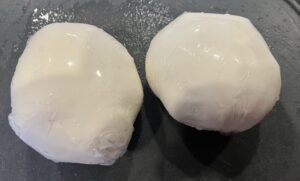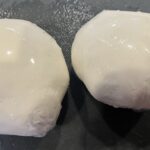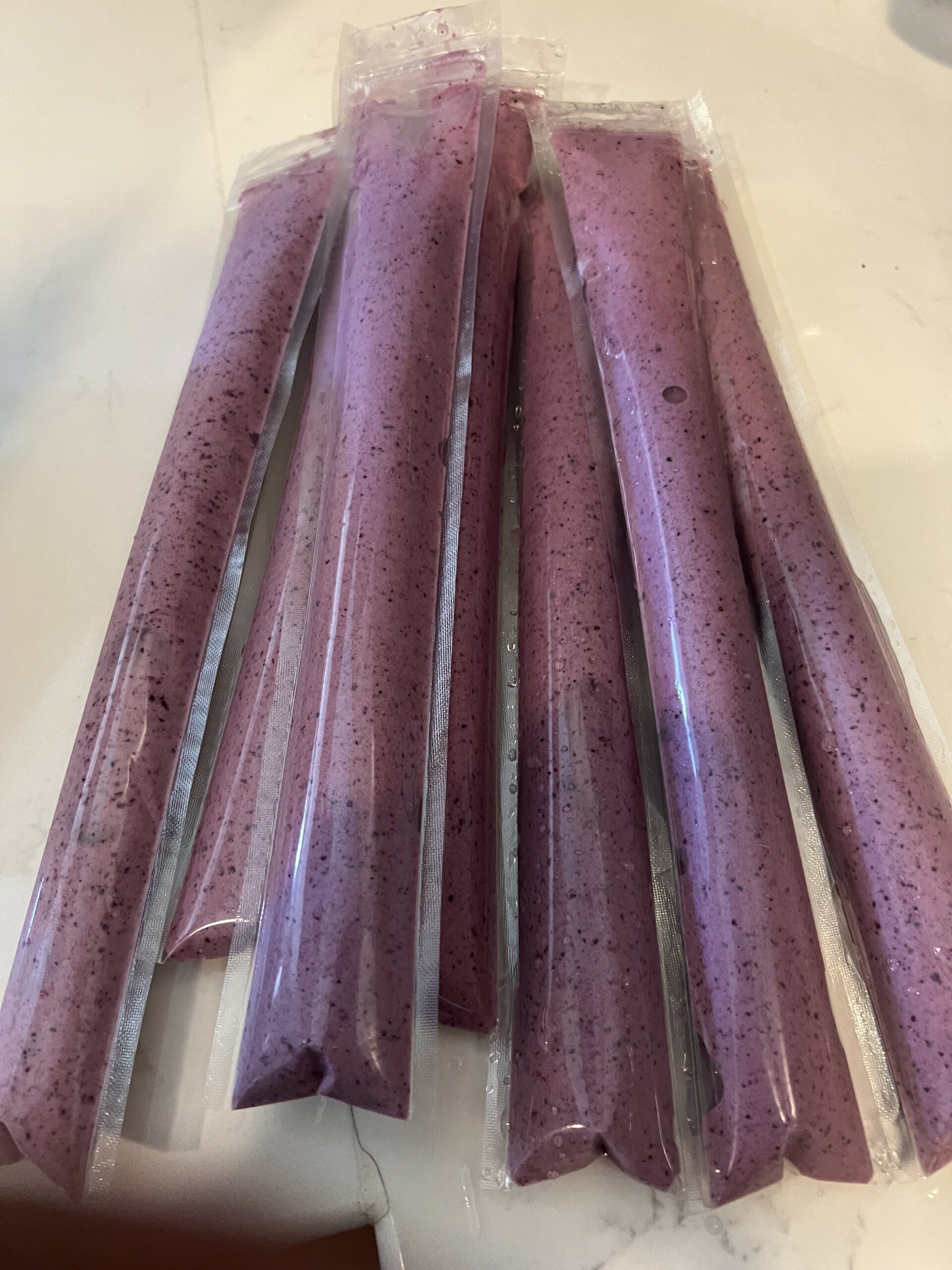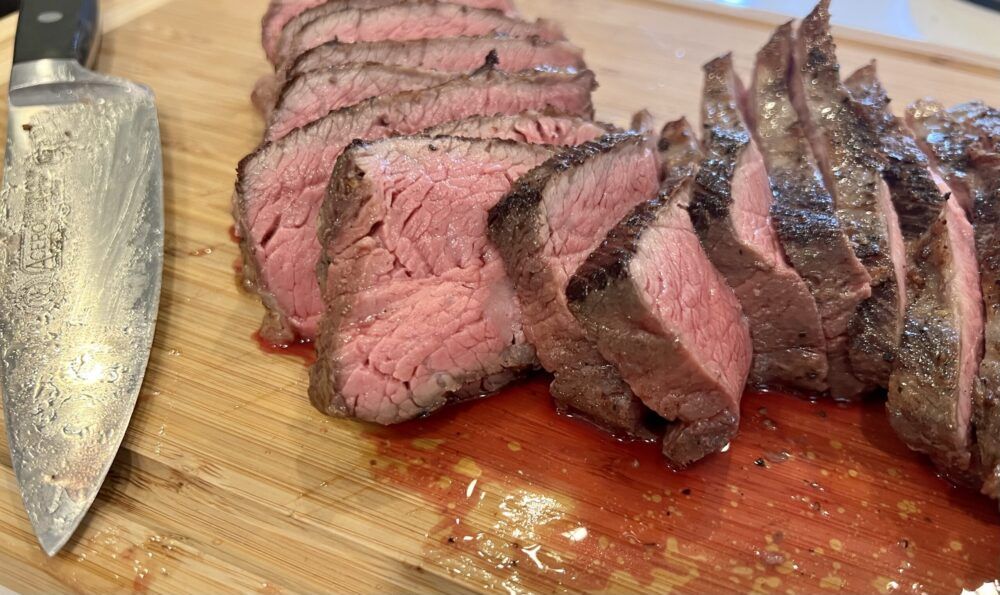The Allure of Fresh, Homemade Mozzarella
Hi All! If there’s one thing you should know about me, it’s that I love cheese, and there are few cheeses that I don’t like (blue cheese is one of them). But today, we’re going to talk about a cheese that’s a real game-changer – mozzarella. And not just any mozzarella….. fresh, homemade mozzarella. Once you’ve tasted it, you’ll be asking yourself, “How have I lived without this?” But before we get into the details, let’s explore the history and science behind this incredible cheese and also how I became interested in making it at home.
Tracing the Origins of Mozzarella
Mozzarella traces its origins back to the Italian countryside and while the exact origins remain a bit hazy, history suggests its birth was in the Campania region of southern Italy, around the 7th century. Traditionally, mozzarella was made using water buffalo milk, a product of the Indian water buffalo introduced to Italy in the 600s. It quickly became a staple in Italian, and today it’s known as Mozzarella di Bufala.
Italian Immigration to America
Fast forward to the late 1800s and early 1900s. That’s when millions of Italians packed their bags and set sail for America, with many of them arriving at Ellis Island, including my great-grandmother. Can you imagine how that must have felt? Over 12 million folks passed through Ellis Island in search of a new life, and Italians were one of the biggest groups.
Family Traditions and a Journey into Cheese Making
My great-grandmother made her new home in Bayonne, New Jersey. When I was younger, we would make the trip from the east end of Long Island to visit on occasion, and it was just like you’d expect from an Italian family. Plastic on the furniture (you know, to keep it nice), religious pictures all over the walls, and the smell of Italian cooking filling the air.
Visiting my great-grandmother and her family wasn’t just about catching up with family. Each visit was like stepping into a living, breathing cookbook of my mom’s family recipes. Over the years, I’ve played around with some of the family Italian family recipes like pizza, pasta sauce. But making fresh mozzarella was something I had never tried. This all changed recently when my parents came to visit us in Maryland. My mom had just learned how to make mozzarella from a parishioner at her church, a man who had spent over 30 years perfecting the craft by making fresh mozzarella every day from high-quality curd at his Italian deli in East Hampton, New York.
Going through the process of turning curd into mozzarella right in my kitchen was like witnessing a little bit of magic. I thought to myself, “Alright, I’ve got to get in on this!”

However, I didn’t want to stop at just making mozzarella from curd. I wanted to dive deeper, and learn to make mozzarella from whole milk. Because let’s face it, we don’t always have curd just hanging out in the fridge, right?
Before going into the recipes, let’s take a look at the science behind making mozzarella (as a scientist I can’t help but be interested in these things).
The Science Behind Turning Milk Into Mozzarella Cheese
First things first, let’s talk about what we’re working with. Milk is an emulsion, which means it’s a mix of milk fat globules suspended in a water-based solution that includes proteins and lactose (milk sugar). The main proteins in milk are casein and whey.
Making mozzarella involves manipulating these proteins to form the stretchy curds we’re after. That’s where citric acid and rennet come in.
Citric acid is used to acidify the milk. By adding citric acid, we lower the pH of the milk, causing the casein proteins to become ‘isoelectric.’ This means they carry no net electrical charge, which allows them to come together more readily instead of repelling each other. This is a vital step because these proteins need to clump together to form curds.
Rennet, on the other hand, contains an enzyme called chymosin. Chymosin specifically targets a protein called kappa-casein, which helps to keep the casein proteins separated in a normal milk solution. By cleaving kappa-casein, chymosin eliminates this protective effect and enables the casein proteins to aggregate, forming a gel-like network: the curd.
After curd formation, the process of kneading and stretching under heat (the pasta filata process) aligns the proteins and helps to give mozzarella its characteristic stretchy texture.
Now, traditionally in Italy, particularly in the making of Mozzarella di Bufala, they would use raw milk and natural whey cultures to acidify the milk instead of citric acid. This process is slower and relies on the natural lactic acid bacteria in the whey converting lactose into lactic acid to lower the pH.
Rennet, however, has been a constant in both traditional and modern methods. Initially, rennet was obtained from the stomach lining of young ruminants, but today, microbial and genetically engineered rennet are also widely used. Personally, I find the animal-based product to work better but either should work.
So, whether you’re using citric acid or a natural whey culture, the basic science is the same. It’s all about manipulating milk proteins to form that beautiful, stretchy mozzarella. Isn’t science great?
What Type of Milk Should You Get?
This is a crucial point. When it comes to making mozzarella, or any cheese at home, it’s important to steer clear of ultra-pasteurized milk. But why is that?
Ultra-pasteurization is a heat treatment process that kills bacteria in milk, extending its shelf life. The milk is heated to at least 280°F for just 2 seconds. That might not sound like a long time, but it’s enough to change the structure of the proteins and sugars in the milk.
For cheese making, we’re interested in milk’s casein proteins. As I mentioned earlier, making mozzarella involves manipulating these proteins to form the curds. However, the ultra-pasteurization process causes the casein proteins to denature, or lose their natural structure, which prevents them from forming proper curds.
The Impact of Ultra-Pasteurization on Cheese Making
Additionally, ultra-pasteurization also alters the calcium balance of the milk. Calcium is crucial in the cheese-making process as it helps the casein proteins stick together. When milk is ultra-pasteurized, some of the soluble calcium becomes insoluble, which can further inhibit the curd formation process.
So, if you’re planning to make mozzarella at home, your best bet is to use fresh, non-ultra-pasteurized milk from grass-fed cows. It’s a bit more perishable, but the curds you’ll get will be worth it! I’ve had good success with pasteurized milk but just make sure they make a point to say it’s not ultra-pasteurized.
Pasteurization and Cheese Making
The reason pasteurized milk still works is that in this method, milk is typically heated to ~161°F (71.7°C) and held at that temperature for at least 15 seconds. While this process kills harmful bacteria like E. coli, Salmonella, and Listeria it is gentle enough to leave many of the beneficial enzymes and nutrients in the milk intact.
Generally, speaking the less processed the milk, the better the end product but again, if you can just avoid ultra-pasteurized that should work.

Perfecting the Mozzarella Texture
Important note: If you want cheese that more easily shreds, you want to work the mozzarella a bit more in the hot water to expel more liquid/whey. If you are looking for that super soft mozzarella texture for topping tomatoes work it less.
Ready to Make Your Own Mozzarella?
Finally….The recipe is provided below. Feel free to leave a comment or to ask a question. I’d love to hear how your cheese turns out.
Homemade Mozzarella Cheese
Equipment
- stove
- instant read thermometer
- large pot
- extra fine strainer look for ones on amazon that are used for Greek Yogurt
Ingredients
- 1 Gallon Grass Fed Whole Milk NOT ultra-pasteurized
- 1.5 tsp citric acid
- 1/4 tsp animal-based rennet vegetarian rennet can work too
- 1 1/4 cup filtered water non-chlorinated is best
Instructions
- Dissolve citric acid in 1 cup of filtered water and rennet in 1/4 cup of filtered water

- Pour milk into large pot. Add citric acid solution to milk slowly with stirring while milk is cold, then slowly heat milk to 96-100 degrees with constant stirring
- Remove from heat then slowly add rennet solution. Stirring pot with slotted spoon from bottom to top constantly for 30 seconds
- Put on lid and let sit undisturbed for 20 minutes. After this time, make sure the curd layer has formed. You can test this with your finger or knife
- Use knife to cut into 1 inch sections for ease of stirring
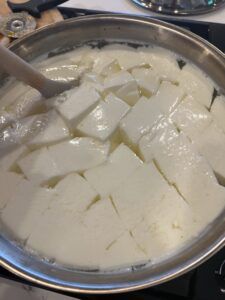
- Slowly heat curd solution with constant stirring to 105 degrees. Stir carefully at this temp for 5 mins.
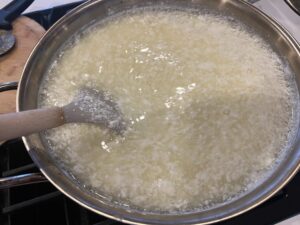
- Remove from heat. Strain through a fine strainer (I find that ones available on amazon for Greek yogurt straining work well). Pressing curds with hand to expel as much liquid as possible. Should be a spongey white solid at this point.
- Form into rectangle like shape (doesn’t have to be perfect) by pressing it between paper or linen towels. Then cut into 1/2 to 1 inch wide slices. Put these curd slices in a new bowl (should be decent size bowl)

- In a separate pot heat salted ~1-2qt water (3-4TBS of Kosher Salt) to 190-200 degrees.
- Slowly pour hot water over curd until submerged. Put on rubber gloves (it’s hot!) and work the curd over the back of a flat metal spatula. Flattening and stretching upward in the process. If water cools, add more hot water and keep stretching and folding until it’s one uniform piece and all curds are smooth and together.
- Start working cheese into lacrosse ball size shape. Pinching at bottom. Top should be smooth. Drop into ice water and let sit for 10 minutes
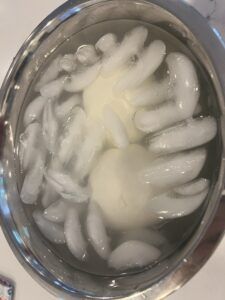
- Sprinkle mozz balls with quality salt. Place smooth size down on plastic wrap. Folding over the 4 corners and twisting the excess at bottom. Top should be smooth. Store in fringe and enjoy within 5-7 days.
